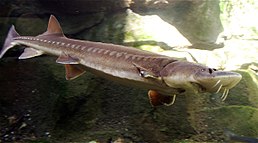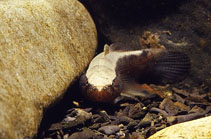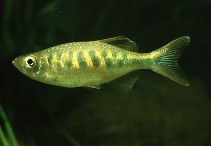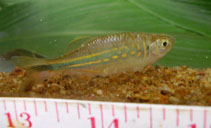Freshwater fish are fish that spend some or all of their lives in freshwater, such as rivers and lakes, with a salinity of less than 0.05%. These environments differ from marine conditions in many ways, the most obvious being the difference in levels of salinity. To survive fresh water, the fish need a range of physiological adaptations in order to keep the ion concentration of their bodies balanced.
41% of all known species of fish are found in freshwater. This is primarily due to the rapid speciation that the scattered habitats make possible. When dealing with ponds and lakes, one might use the same basic models of speciation as when studying island biogeography.
Physiology
Fresh water fish differ physiologically from salt water fish in several aspects. Their gills must be able to diffuse water while simultaneously keeping the salts of the bodily fluids inside. The scales of the fish also plays a part in the scientific process; freshwater fish that have lost too many scales get a surplus of water diffused in through the skin, causing the fish to die.
Another trait characteristic of fresh water fish are the well developed kidneys. These have to be large because a lot of water passes through them. .
Migrating fish

Many species of fish do reproduce in freshwater, but spend most of their adult lives in the sea. These are known as anadromous fish, and include, for instance, salmon, trout and three-spined stickleback. Some other kinds of fish are, on the contrary, born in salt water, but live most of or parts of their adult lives in fresh water; for instance the eels.
Species migrating between marine and fresh waters need adaptations for both environments; when in salt water they need to keep the bodily salt concentration on a level lower than the surroundings, and vice versa. Many species solve this problem by associating different habitats with different stages of life. Both eels, anadromous salmoniform fish and the sea lamprey have different tolerances in salinity in different stages of their lives.
Status
North America
About four in ten North American freshwater fish are endangered, according to a pan-North American study. The main cause being human pollution. The number of fish species and subspecies to become endangered has risen from 40 to 61, since 1989.



